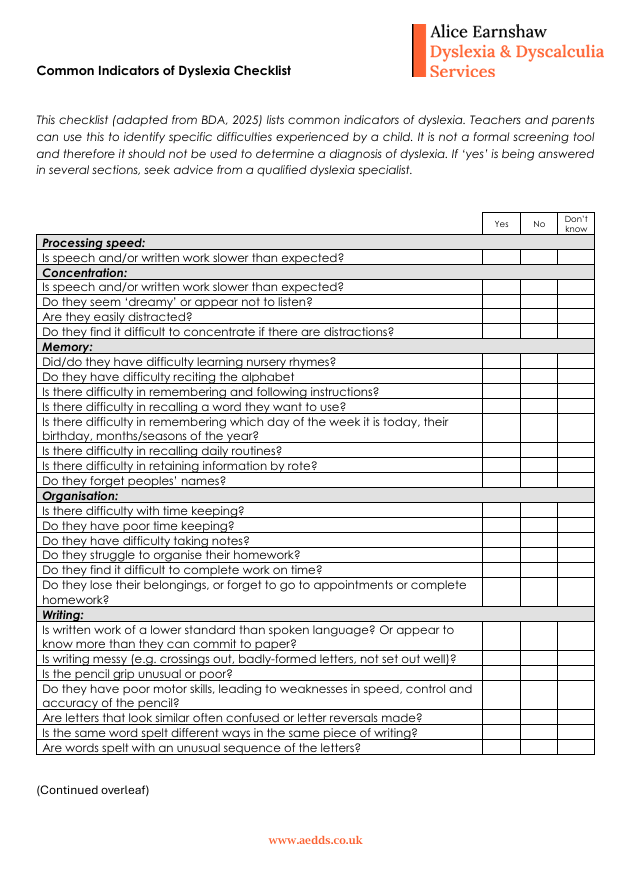What is Dyslexia?
The Delphi Definition of Dyslexia (2025) is used by assessors to support a diagnosis of dyslexia. It covers four areas:
Nature: The nature and developmental trajectory of dyslexia depends on multiple genetic and environmental factors.
Manifestation: Dyslexia is a set of processing difficulties that affect the acquisition of reading and spelling. The most commonly observed cognitive impairment in dyslexia is a difficulty in phonological processing (i.e. in phonological awareness, phonological processing speed or phonological memory). However, phonological difficulties do not fully explain the variability that is observed. Working memory, processing speed and orthographic skills can contribute to the impact of dyslexia.
Impact: In dyslexia, some or all aspects of literacy attainment are weak in relation to age, standard teaching and instruction, and level of other attainments. Across languages and age groups, difficulties in reading fluency and spelling are a key marker of dyslexia.
Variance and co-occurrence: Dyslexic difficulties exist on a continuum and can be experienced to various degrees of severity. Dyslexia can affect the acquisition of other skills, such as mathematics, reading comprehension or learning another language. Dyslexia frequently co-occurs with one or more other developmental difficulties, including developmental language disorder, dyscalculia, ADHD and developmental coordination disorder.
Carroll, J., Holden, C., Kirby, P., Snowling, M.J., & Thompson, PA (2025) Journal of Child Psychology and Psychiatry
What are the indicators of Dyslexia?
The most common indicators of dyslexia are related to phonological processing. Phonological processing is how we use sounds (phonemes) in our language in spoken and written language. Other indicators include orthographic difficulties. These are related to an individual’s ability to recognise and/or form letters of the alphabet and identifying or writing words – or parts of words – that should have been committed to memory.
These questions …
 ▶adapted from BDA, 2025)
▶adapted from BDA, 2025)
…can be used to consider whether you, your child or a pupil you teach has English difficulties.
If you answer ‘yes’ to any of these, please get in touch to discuss your concerns.
